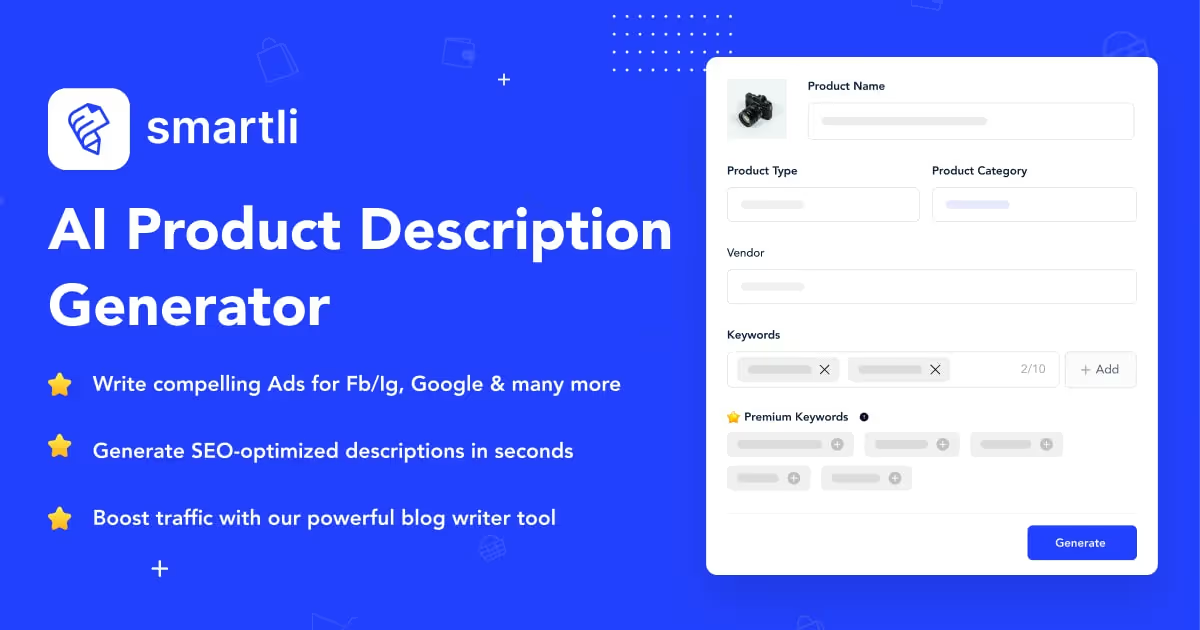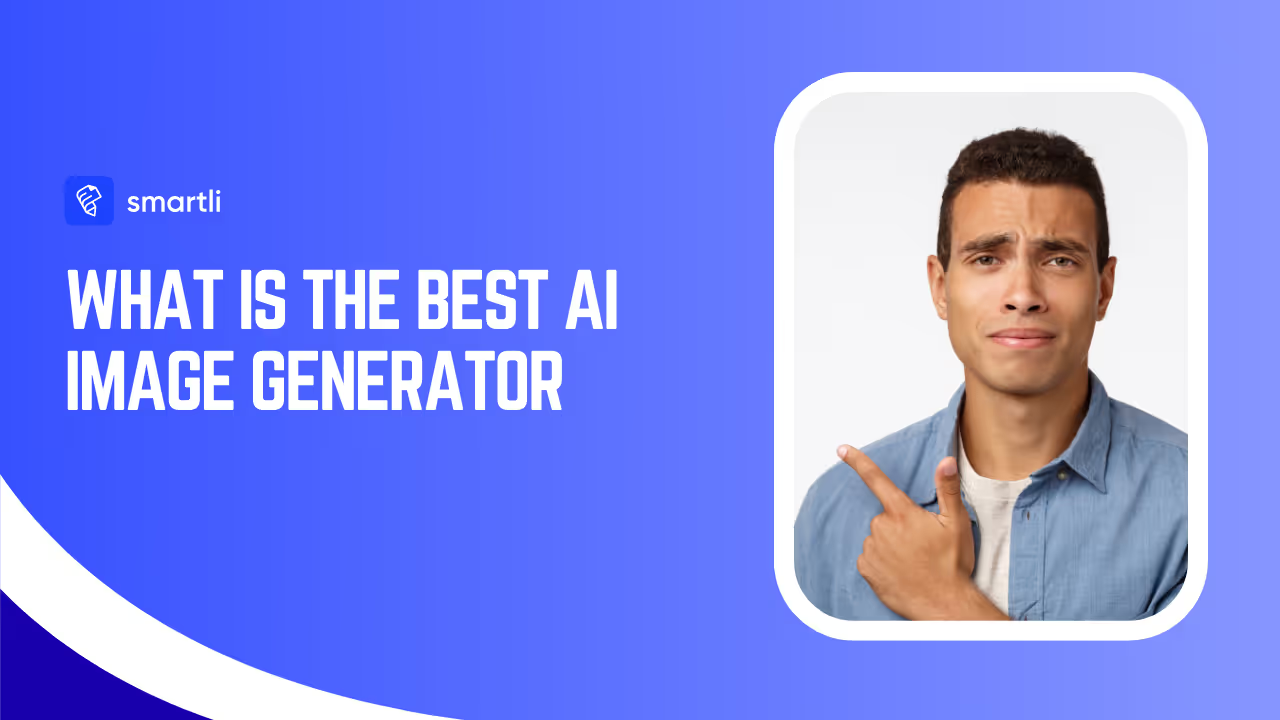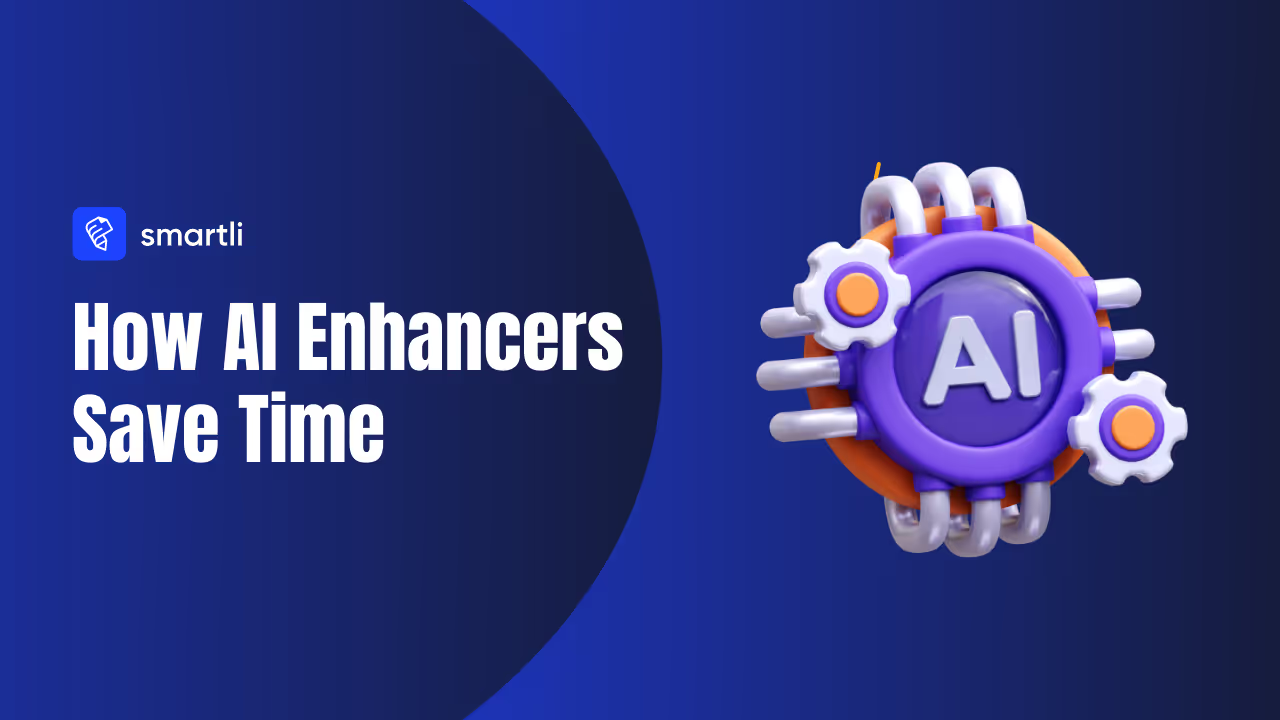Ever wonder why some online stores feel instantly trustworthy? Their product pages flow, descriptions sound natural, and you just know what you’re buying. The secret isn’t luck or a huge writing team—it’s how they handle content creation at scale.
Writing product descriptions for dozens or even thousands of items is exhausting. It’s creative work, but also repetitive, and that’s where most businesses get stuck. An AI description generator can take that heavy lifting off your plate, turning product details into engaging, on-brand copy in minutes.
This isn’t about replacing your voice; it’s about amplifying it. You still guide the tone, but now you can move faster, stay consistent, and focus on growing your store instead of battling writer’s block. Let’s dive into why AI-powered descriptions aren’t just a convenience—they’re quickly becoming a competitive necessity for every online store.
The Case for AI Descriptions in 2025: Speed, Scale, and Search Growth
The e-commerce world is moving fast. Customers expect instant information, search engines reward fresh content, and new products appear daily. In that chaos, keeping every product page polished and consistent isn’t easy. That’s where AI-generated descriptions are quietly rewriting how online stores operate—making speed and consistency a real competitive edge.
Speed That Matches Your Product Velocity
When you’re adding new items every week, the old process of writing each description manually just doesn’t scale. AI tools can turn product specs into well-structured, readable copy in seconds. What used to take days can now be done in hours, freeing you to focus on strategy instead of typing out bullet points.
More importantly, faster listings mean faster indexing on Google. The quicker your descriptions go live, the sooner they start driving traffic and conversions. In today’s market, speed isn’t just efficiency—it’s visibility.
Scaling Quality Without Losing Personality
Most store owners fear that automation will make their brand sound robotic. But the best AI models learn your tone and replicate it across every SKU. You can set style preferences—like casual, playful, or technical—and the generator will apply them consistently.
That means whether a customer reads your first product or your five-hundredth, the voice feels familiar. You don’t lose your personality; you simply scale it. It’s the difference between copying and cloning—your message, multiplied.
SEO That Evolves With Every Update
Search algorithms now prioritize relevance and freshness. Generic copy stuffed with keywords doesn’t cut it anymore. AI description tools can analyze search trends, pick natural keyword variations, and keep your content optimized automatically.
This constant refresh cycle keeps your products competitive without constant manual updates. Instead of rewriting listings every quarter, you can let AI keep your content aligned with what customers are actually searching for.
How AI Description Generators Actually Work (Plain English, No Jargon)
Now that we’ve seen why speed and scalability matter, let’s unpack how these tools actually pull it off. Despite the fancy tech behind them, AI description generators work in a surprisingly practical way. Think of them as tireless assistants trained to turn raw product data into well-written, human-sounding copy.
From Raw Product Data to Readable, On-Brand Copy
Every good AI description starts with structured information—your product title, features, images, materials, and even customer reviews. The AI takes these details and identifies what customers really care about. It then crafts sentences that highlight those benefits while keeping the tone consistent with your brand.
It’s not random text generation. The model learns from patterns of effective marketing copy and blends that with your inputs to create something fresh yet familiar. The result is content that reads like it was written by someone who knows your brand inside out.
The Role of Context and Tone
Context is what separates robotic output from engaging copy. When you set tone parameters—like friendly, expert, or luxury—the AI adjusts its vocabulary and sentence rhythm accordingly. This ensures a product aimed at teenagers doesn’t sound like it’s written for engineers, and vice versa.
Good AI tools also learn from feedback. If a sentence sounds off, you can regenerate or fine-tune it, and over time the tool gets better at mirroring your preferred tone and structure. It’s like onboarding a new copywriter who improves with every project.
Guardrails That Keep Quality in Check
AI is powerful, but it still needs human direction. That’s where guardrails come in—rules and filters that prevent factual errors, exaggerated claims, or compliance issues. You can set banned words, tone restrictions, and target readability levels to maintain brand standards.
Human review adds the final layer of control. By combining automation with oversight, you strike the perfect balance: fast production with reliable accuracy. The key isn’t to let AI replace your process—it’s to make your process smarter and more efficient.
The 4-Stage Workflow to Publish Faster—Without Losing Brand Voice
Now that you understand how AI description generators work, the next step is learning how to use them effectively. The process isn’t about hitting “generate” and walking away—it’s about combining smart data prep, brand control, and human review to create descriptions that convert. Here’s a practical, four-stage workflow that keeps speed and quality in perfect balance.
Stage 1 – Prepare Your Product Data Properly
Your results are only as good as your inputs. Before generating anything, gather every detail about your products—titles, dimensions, materials, benefits, care instructions, and pricing. Organize these details in a spreadsheet or product information management (PIM) system.
Think of this as feeding the AI your brand’s DNA. Clear, structured data helps the tool understand what’s important and reduces the risk of inaccurate or repetitive descriptions. Clean inputs equal strong outputs.
Stage 2 – Generate Drafts at Scale
Once your data is ready, it’s time to start creating. Use batch prompts or templates to generate descriptions for similar products together—like a clothing collection or electronics line. This keeps tone and formatting consistent across your catalog.
If your AI tool allows for customization, include brand guidelines such as writing style, voice, and word preferences. That way, your copy feels like it came from one cohesive storyteller, not a mix of random writers.
Stage 3 – Adapt for Different Sales Channels
Each platform has its own rhythm and expectations. On Amazon, concise bullet points and factual language work best. On Etsy, customers expect a more personal, story-driven tone. Shopify sits comfortably in between, allowing for creativity and personality without losing clarity.
By tailoring your AI-generated descriptions for each channel, you increase engagement and avoid content duplication. The message stays the same, but the delivery fits the platform perfectly.
Stage 4 – Review, Approve, and Publish
Even the best AI can make small errors, so human review is still essential. Check the facts, ensure the tone matches your brand, and verify that no product claims sound misleading. A quick approval checklist—covering accuracy, compliance, and flow—can help maintain consistency.
Once approved, publish and track performance. Keep an eye on engagement metrics and note which descriptions drive more clicks or sales. Over time, these insights will help you fine-tune prompts and get even better results.
Features That Really Move Revenue (and Red Flags to Avoid)

Once you’ve mastered the workflow, the next question is obvious: what should your AI description generator actually do? The right tool doesn’t just create text—it builds a system that makes your team faster, more consistent, and more data-driven. Let’s look at the features that really make a difference, and a few warning signs to steer clear of.
1. Bulk Operations That Actually Save Time
Not every AI tool handles volume well. If you’re adding hundreds of new products, you need a generator that can process batches efficiently while keeping each description unique. That’s where tools like Smartli shine—they let you upload product feeds, apply tone presets, and generate descriptions for entire collections in a few clicks.
It’s not just automation; it’s acceleration with control. You still review and tweak, but instead of spending days, you’re done in hours.
2. Brand Voice That Scales Across Every Product
A consistent tone is what makes your store feel professional. The best tools allow you to define voice, tone, and even “do-not-use” words so every description aligns with your brand. Smartli, for instance, helps you lock in your preferred writing style so even as your catalog grows, your identity stays intact.
It’s like hiring one great writer—and letting them handle your entire store at once.
3. Seamless Integrations With Your Store Platforms
Your AI tool should work where you already do. Look for integrations with platforms like Shopify, WooCommerce, or Amazon so you can generate, edit, and publish descriptions without constant copy-pasting. When your generator connects directly to your product listings, you save time and reduce errors.
Smartli’s compatibility with multiple e-commerce systems makes this process almost frictionless. You can update content straight from your dashboard and push it live instantly.
4. Built-In Analytics for Smarter Decisions
Once your descriptions go live, you’ll want to know which ones perform best. Some tools stop at content creation, but better ones track performance—click-through rates, conversions, and engagement metrics. With Smartli, you can see how your copy impacts results, so you learn which tones or structures actually sell more.
This turns guesswork into a measurable, repeatable process.
5. Localization That Opens New Markets
If you sell internationally, localization isn’t optional. You need language adaptation, unit conversions, and regional phrasing that feels native. A good AI generator adjusts your descriptions automatically to suit local audiences without sounding like a translation.
This helps your brand feel personal—whether your customer is in Berlin, Boston, or Bangalore.
6. Red Flags to Watch Out For
Some tools promise results but create more problems than they solve. Avoid generators that:
- Produce identical outputs for multiple products.
- Lack editing or human review options.
- Can’t integrate with your existing store systems.
- Ignore tone customization or keyword flexibility.
A good rule of thumb: if it feels too “one-size-fits-all,” it probably won’t fit your brand.
Proving It Works: A/B Testing and KPI Framework for Ecommerce Teams
So you’ve built your system, generated your first batch of descriptions, and everything looks great on paper. But how do you prove it’s working? Numbers tell the story. Measuring performance is what turns guesswork into a repeatable, scalable process. With a few smart tests, you can track exactly how your AI-generated content impacts traffic and sales.
Track the Right KPIs
Forget vanity metrics like “words generated.” What matters are the outcomes that move your business forward—click-through rate, add-to-cart rate, conversion rate, and product return rate. These indicators show whether your new copy actually connects with customers.
Smartli makes this easier by connecting description performance to key store analytics. You can instantly see which tone, structure, or phrasing drives more engagement. Instead of guessing, you learn what your audience responds to and refine from there.
Set Up a Simple A/B Test
Start small. Pick 50 to 100 products and split them into two groups: one with your old descriptions, one with AI-generated ones. Keep everything else identical—images, prices, and layout. Run the test for two to four weeks and collect data on impressions, CTR, and conversions.
The beauty of this approach is clarity. If your AI versions perform better, you’ll have measurable proof that automation isn’t just saving time—it’s boosting revenue.
Turn Insights Into a Continuous Improvement Cycle
Once you’ve gathered enough data, identify patterns. Maybe conversational tones perform better for lifestyle products, while concise formats win for tech. Use those insights to update your prompts and templates.
Over time, this cycle builds a content engine that gets smarter with every iteration. Instead of rewriting everything from scratch, you simply tweak your inputs and scale what already works.
Testing isn’t just validation—it’s evolution.
Conclusion – Ship Faster, Stay Authentic, and Keep Improving
AI description generators aren’t just changing how e-commerce stores write—they’re changing how they grow. The difference between a store that keeps up and one that leads often comes down to how quickly and consistently it can communicate value.
That’s where tools like Smartli quietly make a big impact. Instead of juggling spreadsheets, writers, and approval queues, you get a unified space to create, refine, and analyze your product descriptions. It keeps your brand voice consistent while helping you publish faster and track what’s actually working.
The secret isn’t just automation—it’s balance. Smartli gives you structure and speed, but you still decide the story your brand tells. Every description becomes sharper, more aligned, and more effective because you have both creativity and technology working together.
In the end, that’s what modern e-commerce is about—selling smarter, not harder.
FAQs About Why Every Online Store Needs an AI Description Generator
How do AI product description generators work?
They turn structured inputs—like titles, features, images, and reviews—into clear, on-brand copy. The model drafts, then refines tone and structure based on your rules, so descriptions read naturally while staying consistent across SKUs.
Are AI-generated product descriptions good for SEO?
Yes—when they’re unique, helpful, and aligned to search intent. Use natural keyword variants, keep copy scannable, and refresh high-value listings regularly. Avoid duplication and thin content to maintain rankings.
Can I use AI product descriptions on Amazon and Etsy?
You can, but tailor the format to each marketplace. Amazon favors concise bullets and compliant claims, while Etsy rewards narrative detail and maker context. Always follow platform style guides and policy rules.
How do I keep brand voice consistent at scale?
Create a short style guide with tone, vocabulary, and banned words. Bake these into your prompts and templates, then run human review before publishing. Save winning patterns so every new SKU inherits the same voice.
How do I prevent AI from making up specs or claims?
Use negative prompts like “do not invent details,” require source fields for specs, and add a quick fact-check step. If data is missing, instruct the system to leave the field blank instead of guessing.



















